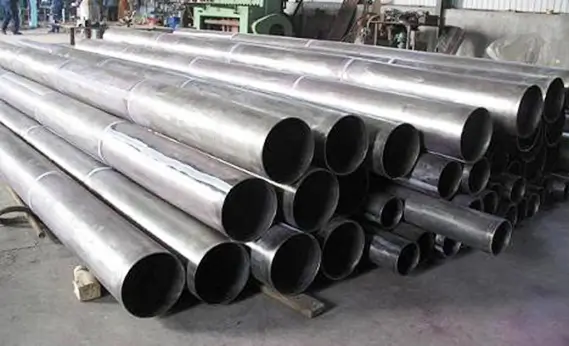Artificial Intelligence (AI) is revolutionizing various industries, and steel procurement is no exception. By harnessing AI technologies, steel companies can enhance efficiency, accuracy, and strategic decisionmaking in their procurement processes. This blog explores how AI is transforming steel procurement, highlighting its benefits, applications, and potential challenges.
Understanding AI in Steel Procurement
Artificial Intelligence refers to the simulation of human intelligence in machines programmed to think and learn. In steel procurement, AI can analyze vast amounts of data, recognize patterns, and make datadriven decisions to optimize procurement strategies.
Key Aspects:
– Data Analysis: AI processes and interprets large datasets to provide actionable insights.
– Predictive Analytics: AI uses historical data to forecast future trends and demands.
– Automation: AI automates repetitive tasks, reducing manual effort and increasing accuracy.
Storytelling Insight: Imagine a steel procurement team using AI to analyze market trends and predict future steel prices. This predictive capability allows them to make informed decisions about when and where to purchase steel, ultimately saving costs and enhancing supply chain stability.
Benefits of AI in Steel Procurement
1. Enhanced DataDriven Decision Making
Description: AI leverages data to provide deeper insights and more accurate forecasts, improving decisionmaking.
Benefits:
– Market Insights: AI analyzes market trends and provides forecasts, helping procurement teams anticipate price changes and adjust strategies accordingly.
– Demand Forecasting: AI predicts future demand based on historical data, enabling better inventory management.
– Best Practice: Utilize AI tools to analyze market data and generate actionable insights for strategic procurement decisions.
2. Increased Efficiency through Automation
Description: AI automates routine and timeconsuming tasks, streamlining procurement processes.
Benefits:
– Order Processing: AI systems automate order placements, tracking, and reporting, reducing manual workload.
– Supplier Management: AI can evaluate supplier performance and manage relationships more effectively.
– Best Practice: Implement AIdriven automation to handle repetitive tasks, freeing up procurement teams to focus on strategic activities.
3. Improved Risk Management
Description: AI helps identify and mitigate risks associated with procurement, such as supply chain disruptions or price volatility.
Benefits:
– Risk Assessment: AI analyzes potential risks and suggests mitigation strategies.
– Scenario Planning: AI models different scenarios to prepare for potential disruptions.
– Best Practice: Use AI to conduct risk assessments and develop contingency plans, enhancing your ability to respond to unforeseen challenges.
Applications of AI in Steel Procurement
1. Predictive Analytics
Description: Predictive analytics involves using AI to forecast future trends and demands based on historical data.
Applications:
– Price Forecasting: AI predicts future steel prices, allowing procurement teams to time their purchases strategically.
– Demand Prediction: AI forecasts future demand for steel products, aiding inventory management and production planning.
– Example: A steel company uses AI to analyze historical price data and predict future steel prices, leading to cost savings by timing purchases to avoid price peaks.
2. Supplier Selection and Management
Description: AI assists in evaluating and selecting suppliers and managing supplier relationships.
Applications:
– Supplier Evaluation: AI assesses supplier performance based on various metrics, such as delivery times and quality.
– Contract Management: AI helps negotiate and manage supplier contracts more effectively.
– Example: AI analyzes supplier performance data to identify the most reliable suppliers, improving procurement efficiency and product quality.
3. Automated Procurement Processes
Description: AI automates procurement tasks, such as order placement, tracking, and reporting.
Applications:
– Order Automation: AI systems automatically place orders based on inventory levels and demand forecasts.
– Reporting: AI generates detailed reports on procurement activities and performance.
– Example: An AI system automatically places steel orders based on realtime inventory data, ensuring timely replenishment and reducing manual effort.
Challenges and Considerations
1. Implementation Costs:
Challenge: Integrating AI systems can involve significant upfront costs.
Consideration: Evaluate the longterm benefits and ROI to justify the investment.
2. Data Quality:
Challenge: AI’s effectiveness depends on the quality of data it processes.
Consideration: Ensure accurate and comprehensive data for optimal AI performance.
3. Change Management:
Challenge: Adopting AI may require changes in workflows and processes.
Consideration: Provide training and support to ensure a smooth transition.
Artificial Intelligence is a transformative force in steel procurement, offering enhanced decisionmaking, increased efficiency, and improved risk management. By leveraging AI technologies, steel companies can navigate market complexities, optimize procurement strategies, and gain a competitive edge. As AI continues to evolve, its role in steel procurement will likely become even more integral, driving innovation and efficiency in the industry.
Storytelling Insight: As steel companies increasingly embrace AI, they transform their procurement processes, leading to more strategic decisionmaking and streamlined operations. This technological shift not only enhances procurement efficiency but also positions companies for longterm success in a competitive market.




